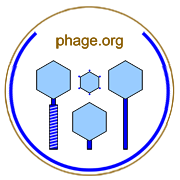

Velocity of phage attachment/initiation of infection of bacteria.
Generally phage adsorption rates are governed by considerations of mass action but also relevant is the speed of transition from reversible to irreversible attachment as well as phage affinity for phage receptor molecules found on the bacterial surface. Rates of adsorption, as described by adsorption constants, a.k.a., adsorption rate constants, thereby are a function primarily of a combination of rates of encounter between phage virions and bacteria in combination with likelihood of successful attachment given encounter.
Rates of encounter are governed by rates of virion diffusion, rates of bacterial movement, bacterial cross section (target size), and to some extent virion cross section as well. Likelihood of irreversible adsorption given reversible adsorption is a function of virion affinity for phage receptors found on bacterial surfaces. Rates of transition from reversible to irreversible adsorption are also a function of phage properties in combination, presumably, with bacterial properties.
The contribution of rates of transition from reversible to irreversible adsorption, if indeed such transitions occur, are only noticeable at sufficiently high bacterial densities that all other contributions to phage adsorption rates are of extremely short duration.
Phage multiplicities of infection, particularly as equivalent to multiplicity of adsorption or multiplicity of infection, actual are a function of virion adsorption rates as well as phage titers and this is so particularly given lower bacterial densities. That is, the more phages that are present within an environment, the longer period over which incubation is allowed, and the greater the rates of adsorption of individual phage particles to bacteria then the overall greater ratio of adsorbed phages to phage-susceptible bacteria found within an environment.
For more on this topic, see Wikipedia, Google, and PubMed. Contact web master. Return to terms.